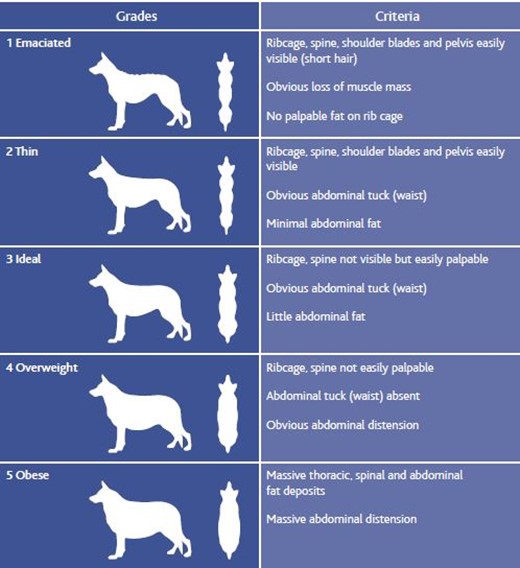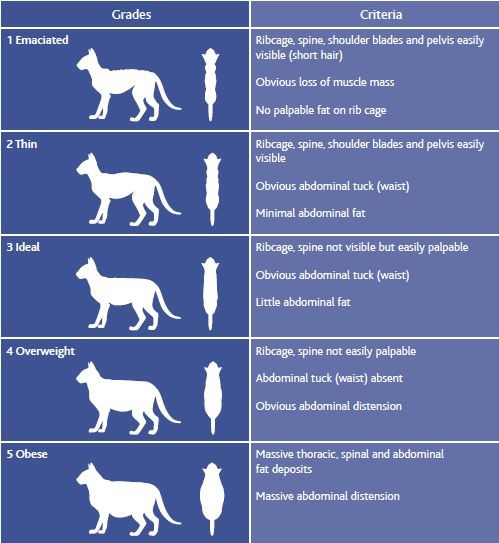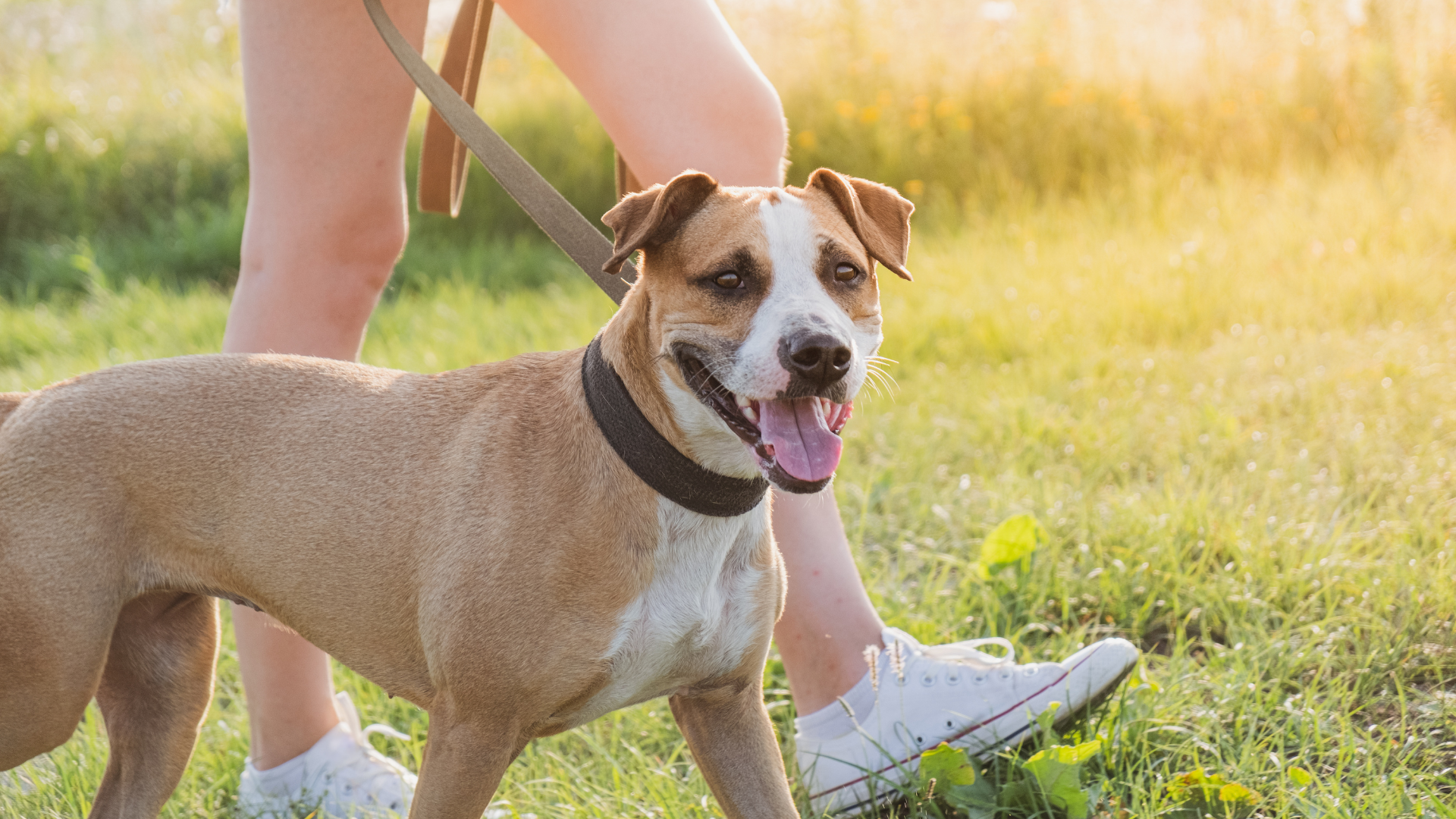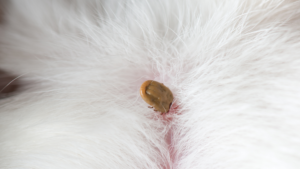Obesity in our pets is an epidemic and unfortunately relatively common for 1 in 3 pets considered overweight or obese.
Being overweight can affect our own health, and our pets are no different. Excess weight puts pressure on bones and joints, which may exacerbate or create issues like degenerative joint disease, cruciate ligament injuries, patella luxation, hip and elbow dysplasia and other disorders of the bones and joints. Obesity may also lead to an increased risk of endocrine (hormone) diseases, diabetes, cancers, and cardiorespiratory diseases. Pet’s carrying excess weight can also become less heat tolerant which is especially problematic for brachycephalic (short nosed) pets.
How do you know if your pet is overweight? Using weight alone can be very confusing, especially in dogs who come in a wide range of shapes and sizes! A 10kg Chihuahua and a 10kg Border Collie would have two very distinct nutritional problems! So for our pets, tools like body condition score charts as well looking for three key features on your pet may help you determine whether or not your pet is overweight.
When it comes to our pets, look at and feel three key areas:
- Ribs – You should be able to feel the ribs easily, without having to dig your fingers in to extra cushioning. But the ribs should be covered with a thin layer of tissue, so not protruding out which may indicate that your pet is in fact, underweight.
- Waist – Stand above your pet and look straight down at their back. Can you see a waist between ribs and hips, or does your pet look more rectangular from above?
- Tummy Tuck – When you look at your pet from the side, your dog’s tummy should be higher than their rib cage. This can be a little more difficult with cats because of their primordial pouch, so review all aspects together to determine whether your feline friend needs to have a balanced diet.
For a visual representation and a way to describe just how over or underweight our pets are, body condition score charts have been developed. These are generally either a 1-5 or 1-9 scoring system with 1 being severely underweight to 5 or 9 indicating obesity.


Here are some recommended ways to ensure your pet stays within a healthy weight range.
- Consult with your Veterinarian about what a healthy weight for your pet is. Your pets’ ideal weight range will depend on their breed and frame.
- Measure your pet’s daily food portion each morning and ensure all food is fed from that and that only. Remember, energy in vs energy out and adjust accordingly.
- Give love to your pet in other ways than food – exercise, affection, sniffing, games and play, and training are all super beneficial to your pet rather than over feeding (yep – cat’s can be trained too!).
- Get rid of the bowl – feed your pet through puzzle feeders and scatter feeding (these burn energy as they work for their food which is a natural behaviour). You can get puzzle feeders for cats too.
- Healthy treats – Give your pet chopped carrots, cucumber, broccoli, dehydrated chicken breast or meat strips as a treat or reward. Fish also makes great meat strips as it’s low in calories, plus they find them to be extra tasty! Just be sure to use these sparingly and as a treat only.
- Enrich the days – spice up your day by exploring new places, new types of exercise, sniffing walks to shift the focus from food to stimulate your dog. If your cat is comfortable outdoors, a cat-backpack may be suitable for them to come along.
- Training – we are presented with multiple training opportunities each day. Use your pet’s daily food portion as their reward for good behaviour we want to see continued.
If you are still unsure or your pet scores on the lower or higher ends of the chart, we suggest booking in a visit to your trusted Veterinarian to learn more about your pet.
References
Dog body condition score template – https://wsava.org/wp-content/uploads/2020/01/Body-Condition-Score-Dog.pdf
Cat body condition score template – https://wsava.org/wp-content/uploads/2020/08/Body-Condition-Score-cat-updated-August-2020.pdf
Pet Obesity Epidemic Fact Sheet – https://vetinnovations.com/wp-content/uploads/2018/02/180123-new-2018-pet-obesity-epidemic-fact-sheet-copy-final.pdf
Pet insurance can help by covering a portion of the eligible vet bill if the unexpected happens. Because it is difficult to predict the costs of veterinary care, it can help to have measures in place to help prepare for the unexpected. Check out our partner network and explore our policy tools to find a pet insurance policy.
Not all conditions or items are covered by Pet Insurance. Refer to the applicable Product Disclosure Statement for information about coverage and exclusions.








